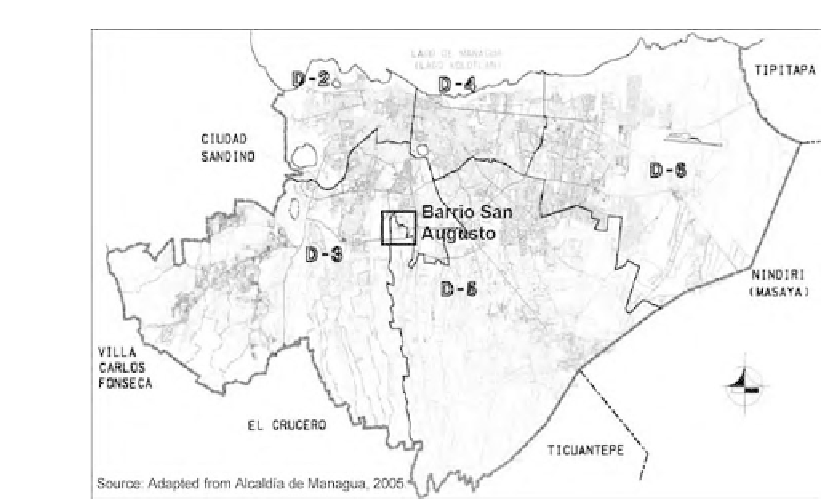Agriculture Reference
In-Depth Information
Figure 11.1 Map of Managua showing location of Barrio San Augusto
the San Augusto Community Association, Asociacio´ n Comunitario San
Augusto (ACSA), assisted in mobilizing community members. FUNDECI also
participated in data collection, focus group discussions, interviews and in
participatory mapping.
Semi-structured interviews and participatory mapping were the main
methods through which primary data at the community level were collected. In
San Augusto, there were a total of 25 community members (20 women and five
men) who participated in the interviews and mapping process. The sample
population was obtained through two means: first, by asking the participants of
an urban agricultural workshop organized by FUNDECI; and second, through
invitations sent (in person) to households not participating in the workshop.
While the research interviews and mapping were directed equally at men and
women in households, the majority of participants were women.
There are several main reasons why more women participated. First,
FUNDECI's urban agricultural workshops were aimed at encouraging small-
scale food production in home patios, an activity traditionally undertaken by
women in Nicaragua (Lok, 1998; Me´ ndez et al, 2001). Second, patios in these
urban homes are more than just gardens or yards. Instead, they are 'rooms' of
the house - that is, they contain the kitchen, laundry area, washroom and
living room where women's domestic tasks take place. Therefore, the patio is
viewed as a female space. In Nicaragua, women continue to be responsible for
the majority of domestic chores (Espinosa, 2004).
5
As such, women are the
primary caretakers of that space, even when men also carry out activities in
the patio. Men, for example, may help by trimming trees, repairing fences and








